IMHO, I don't think that different measuring systems are problems. Standardisation is matter of compatibility, or economy, but technically, there is no misunderstanding.
But "directionality" of cable is very bad idea for audio fashion marketing.
But "directionality" of cable is very bad idea for audio fashion marketing.
Well have you followed enough to try it?
There's nothing to try; there's no value in replicating confusion and errors.
I would have sliced off an inch, cut that in 5 equal size pieces, to hand you 2 and tell you to PO, creepy foreigner
Reminds me of the classic Eurotrash sketch advertising the French Association for the Reduction of Tourism. must be available on the web somewhere. NSFW
1 pint (pt) = 473.2 mL
They say things are bigger in TX, but I prefer the UK pint: 568.3 ml.
So there can be a 20 dB difference even before the conservative guys give their worst case numbers often another 3 dB. Others just take the 1 watt number add a bit for supposed maximum power and present that. Then there are the folks who just lie!
maybe it would be more useful and less cheating on the numbers if a distortion (THD) number was used. A max of 10% for consumer and 5% (or less) for 'PRO'. When you reach that level of distortion, you have your max power rating.
??
THx-RNMarsh
Units of measure
I once asked the late Jim Fullerton what it was that made an attorney a senior partner. He told me via a story of a US law firm that had done a lengthy piece of work for a British company. At the conclusion the head of the company had a meeting with the senior partner, and thanked him for the excellent work. He then said And we have never discussed your fee. The senior partner began: 200,000... The Brit was a bit taken aback and said Pounds or dollars?? (this was when the exchange rate was about five dollars to the pound sterling). Not missing a beat the senior partner said Well of course we always quote in the client's currency.
The fee had been 200,000 dollars, but with his quick thinking in the midst of this opportunity, it went up by a factor of about five.
"And that, Bradley, is why the man was a senior partner".
Fullerton was at the time the CEO of the Capital Group, the world's third largest such. I was friends with his daughter.
I once asked the late Jim Fullerton what it was that made an attorney a senior partner. He told me via a story of a US law firm that had done a lengthy piece of work for a British company. At the conclusion the head of the company had a meeting with the senior partner, and thanked him for the excellent work. He then said And we have never discussed your fee. The senior partner began: 200,000... The Brit was a bit taken aback and said Pounds or dollars?? (this was when the exchange rate was about five dollars to the pound sterling). Not missing a beat the senior partner said Well of course we always quote in the client's currency.
The fee had been 200,000 dollars, but with his quick thinking in the midst of this opportunity, it went up by a factor of about five.
"And that, Bradley, is why the man was a senior partner".
Fullerton was at the time the CEO of the Capital Group, the world's third largest such. I was friends with his daughter.
If i ask someone how much cm3 there s in a m3 the answer is straightfowardly 0.000001m3, for how much cubic inches in a cubic foot the answer provided by SY is 1/12^3, in one case the number can be directly computed while in the imperial "system" the answer cant be computed instantly, unless you can answer as fast that it s 0.0005787037037.
Ahh yes, of course. Although, the way I was brought up, I'd say 12^3 is 144 x 12 which is 1440 + 20% which should be around 1730. Close enough for government work. 😉
Jan
IMHO, I don't think that different measuring systems are problems. Standardisation is matter of compatibility, or economy, but technically, there is no misunderstanding.
But "directionality" of cable is very bad idea for audio fashion marketing.
Not at all, it is an excellent idea for audio fashion marketing. There must be several people who are making quite a comfortable living off of it, thank you!
Jan
I guess I've just memorized it's 1728. I'm one for metric, for sure (and most of my regularly used units are), but that one's pretty easy. Along with g/lbs and a few others. I guess it's expected as an US-based engineer to be able to translate pretty naturally.
As far as the Mars-metric/Imperial snafu: that had less to do with units and much more to do with egos.
As far as the Mars-metric/Imperial snafu: that had less to do with units and much more to do with egos.
The issue has bitten me a few times when laying out a board and I drew a footprint assuming it was in mm and my system was still in imperial. That board looked funny with a square inch opamp!
Of course I always print it at scale for checking. 😎
Jan
Of course I always print it at scale for checking. 😎
Jan
Directionality of anything that carries an alternating current is a bad idea.
Bill you are needed in the REW33 thread. ..
Jan
Sy,
Is that the same as one liter=61.0237 cubic inches! Yes a good thing to know when working on box size and such.
Billshurv,
it did sound better saying I had a 302 cu in Z'28 than calling it a 5 liter!
Is that the same as one liter=61.0237 cubic inches! Yes a good thing to know when working on box size and such.
Billshurv,
it did sound better saying I had a 302 cu in Z'28 than calling it a 5 liter!
maybe it would be more useful and less cheating on the numbers if a distortion (THD) number was used. A max of 10% for consumer and 5% (or less) for 'PRO'. When you reach that level of distortion, you have your max power rating.
??
THx-RNMarsh
It turns out that after 3 dB of compression when the transducer cools down it usually still meets all of the parameters at the start. At more than 3 dB of compression sensitivity tends to change. So it really is a rating of maximum power handling. Also at 6 dB of power compression the voice coil tends to fail.
The folks who try peak power want bragging rights for who is the loudest. Fidelity isn't usually a concern when you are at levels where the ears distort.
Jan,
First thing I have to do when doing a CAD drawing is set the type of dimensional units, nothing worse than doing a drawing and finding out you did it with absolute dimensions and they are in the wrong value, a real mess to fix.
First thing I have to do when doing a CAD drawing is set the type of dimensional units, nothing worse than doing a drawing and finding out you did it with absolute dimensions and they are in the wrong value, a real mess to fix.
Really?
Hi Ed
Reversing the connection of a coaxial cable (center conductor to ground, shield to signal) always makes for increased noise pick-up for me, especially when more than one instruments are connected in the set-up.
The following screen shots are from noise pick-up tests in my workshop. A very simple (no loops) setup.
A cable connected at the 1Mohm Input of a signal analyzer (10kHz to 200MHz span, linear horizontal scale 20MHz/div)
George
Attachments
-
 1 BNC T.PNG53.8 KB · Views: 164
1 BNC T.PNG53.8 KB · Views: 164 -
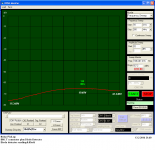 2 BNC T & Diode det.PNG54.3 KB · Views: 149
2 BNC T & Diode det.PNG54.3 KB · Views: 149 -
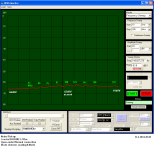 3 RG59 5.755m open.PNG55.8 KB · Views: 154
3 RG59 5.755m open.PNG55.8 KB · Views: 154 -
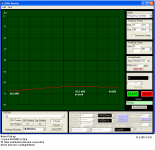 4 RG59 5.755m 50 R.PNG55.8 KB · Views: 153
4 RG59 5.755m 50 R.PNG55.8 KB · Views: 153 -
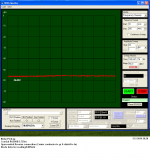 5 RG59 5.755m open reversed.PNG108.9 KB · Views: 149
5 RG59 5.755m open reversed.PNG108.9 KB · Views: 149 -
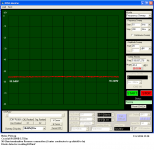 6 RG59 5.755m 50R reversed.PNG55.6 KB · Views: 62
6 RG59 5.755m 50R reversed.PNG55.6 KB · Views: 62 -
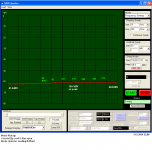 7 Zip cord 5.42m open.PNG54.8 KB · Views: 69
7 Zip cord 5.42m open.PNG54.8 KB · Views: 69
Yeah, that's why whenever I work in Solidworks, I make a set of reference drawings and then do equation drive everything else off those. If I screw up something, I can go back to the references and generally fix everything else quickly. (like unit oopses)
It's fun when the machine shop wants metric but some of the weird tooling (really really small drill bits, mostly) is standard. So it's nice to talk it over with the machinist before they go to work, especially since they're chock full of advice and seem to enjoy teaching students.
It's fun when the machine shop wants metric but some of the weird tooling (really really small drill bits, mostly) is standard. So it's nice to talk it over with the machinist before they go to work, especially since they're chock full of advice and seem to enjoy teaching students.
And why do the electronic companies insist on showing distortion ratings at 10% distortion for there monolithic amplifier chips? Who wants to look at that when you are designing a real amplifier circuit? They make is a pain to find the 1% ratings many times, seems rather silly if you aren't advertising to some dumb a*s consumer looking to make their car license plate rattle.
- Status
- Not open for further replies.
- Home
- Member Areas
- The Lounge
- John Curl's Blowtorch preamplifier part II